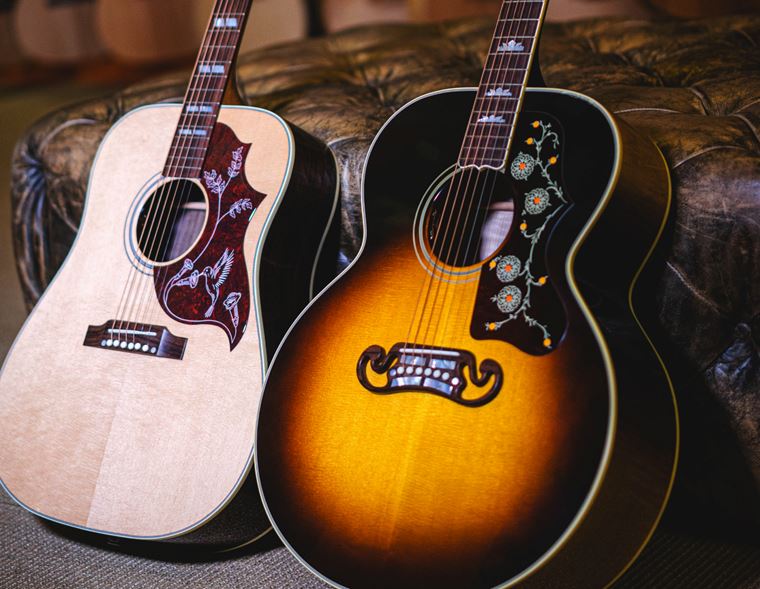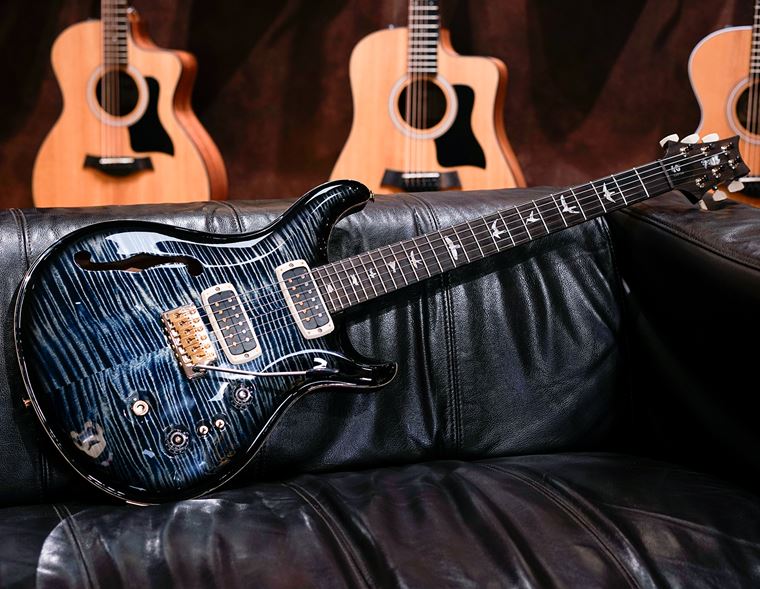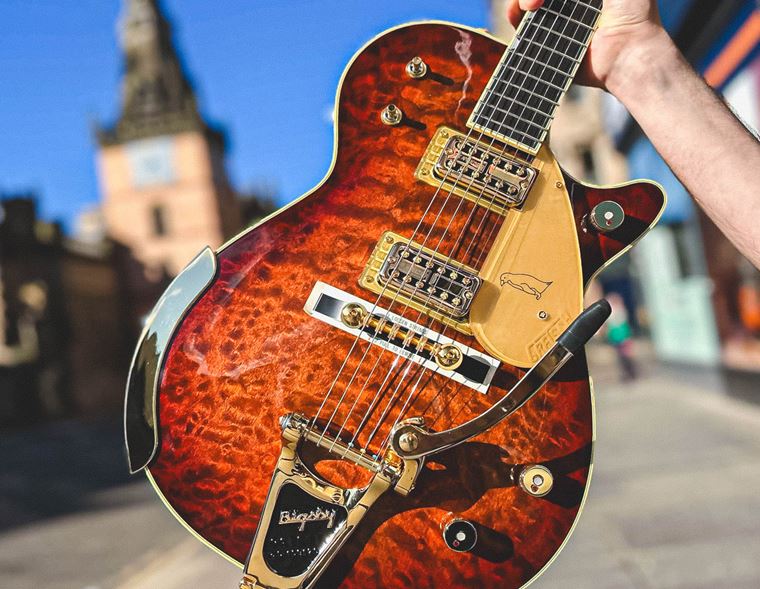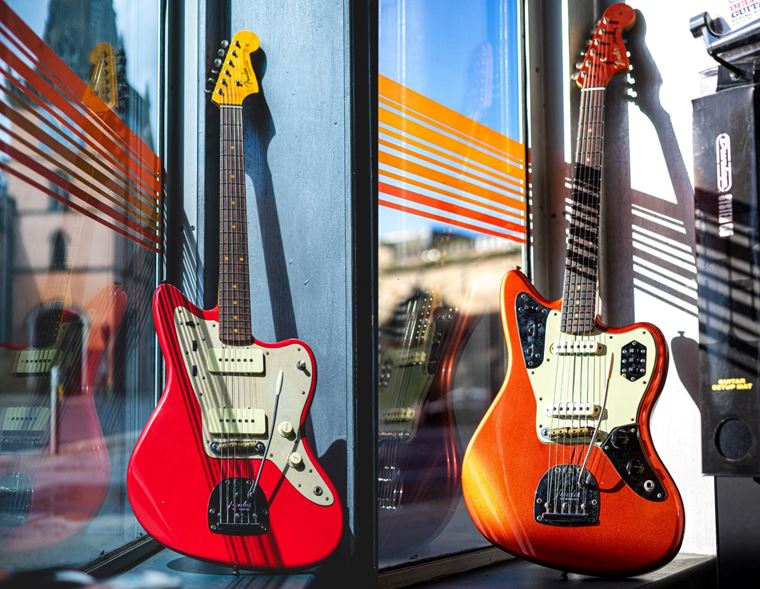Our Expert Guide to Gibson Semi Hollow Guitars
"Semi-hollow", "Semi acoustic", "Semi" are some of the many terms that our guitar-loving world uses to describe a certain style of guitar made famous by Gibson. We all know these beautiful instruments, whether we were introduced to them by Chuck Berry, Marty McFly or Noel Gallagher, and today, I’d like to chat a little about them.
Today’s blog is all about the Gibson ES: which models are out there and what makes them different from each other, and indeed from the likes of the Les Paul.
Interestingly, Gibson themselves are actually focusing on building only a few select ES models at the moment, so those are what I’ll include here today. I do expect Gibson to bring back more of their historical ES models to the current lineup in the future, so I’ll perhaps update this blog somewhere down the line, in order to keep things up to date.
In the meantime, though, here is everything you need to know about Gibson ES models in 2024!
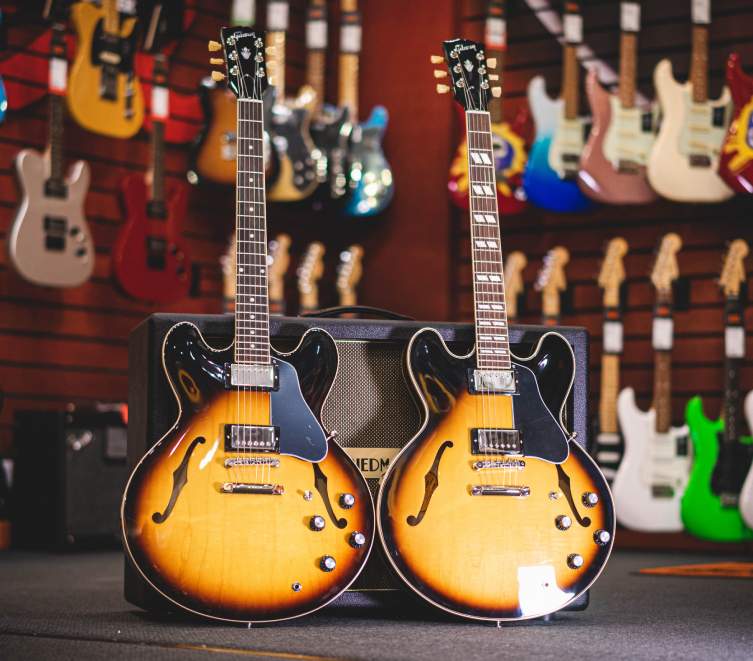
Contents
- What is a Semi-Hollow Guitar?
- What is a Thinline Guitar?
- What is Gibson ES?
- Gibson ES-335
- Gibson ES-345
- Gibson ES-355
- The Gibson ES-336 & 339
- A Gibson For All Genres
What is a Semi-Hollow Guitar?
Semi hollow guitars employ a solid block of wood down the centre of the guitar’s inside, where the pickups are mounted. Apart from that, the body is created with multiple plys of wood made into a lightly arched shape over this centre block, forming a hollow area at either side. These hollow parts are indicated via violin-style f-holes, and the guitars are generally (though not always, as we’ll see!) bigger than regular electric guitars, too.
An example of a hollow body guitar would be the sort of large-bodied archtop jazz guitars that Gibson were famous for making in the 1930s: guitars that look only a step or two away from a full-on acoustic guitar, with deep, hollow bodies. These are the types of instrument that Gibson currently don’t seem to be making, at least in terms of regular production, but if you are familiar with the ES-175 (see pic below), then that’s a hollow body!
Their size and semi-hollow nature make them acoustically louder than solid body guitars, but I would hasten to add that these are not ‘acoustic guitars’ in the way your trusty dreadnought is: they are designed for a ‘plugged in’ sound primarily.
What is a Thinline Guitar?
Now, the other term to cover here is ‘thinline’ and that’s a simple one. Compared to fully hollow body guitars, these are simply thinner. There’s less depth to the body due to the construction using that solid centre block. Take a look at this side-on image of an ES335 and you’ll see what I mean; it’s the same thickness as a normal electric guitar:

What is Gibson ES?
Gibson ES stands for ‘Electric Spanish’, a deliberately retro term from the days of olde, when guitars were called ‘Spanish guitars’ to differentiate them from lap steel Hawaiian guitars, believe it or not! In the pre-rock n roll age, Hawaiian slide music was huge!
So that explains the ‘ES’, but what about the numbers?
The numeric for most of these historic Gibson guitars actually comes from the price! Yes, when the ES-175 debuted in 1939, it cost $175, and the ES-335 was $335 in 1958. This isn’t really the case nowadays, where the numbering conventions tend to highlight a difference in features or design.
On a side note, there is a little dispute on the pronunciation of ‘335’ and the other numbers. People in the UK and some parts of Europe tend to say ‘three three five’, whereas Americans and other Europeans say ‘three thirty five’. What’s correct? Well, I’d say that since these are American guitars, it makes sense to talk about them in the same way as their creators, therefore ‘three thirty five’, but everybody will know what you mean either way, so don’t worry about that!

Gibson ES-335
This is the blueprint for Gibson’s thinline ES guitars. Released in 1958, the ES-335 has proven to be a massively popular instrument, remaining in production constantly since its release. Lots of Gibson’s ‘House Style’ is represented here, and I’ll list some of this now for easy reference:
- 24.75” scale length
- 12” radius fingerboard
- Glued neck join
- Tune-o-matic bridge and (on most examples) a stop bar tailpiece
- Two PAF-style humbucker pickups
- Four controls: two volumes, two tones.
- Finishes that are very ‘Gibson’, including Cherry Red, Natural and Vintage/tobacco Sunburst
So far, that list could describe the Les Paul or the SG! Indeed, it is the body construction that singles out the ES-335. The solid centre block is usually made from maple, and the front, back & sides are made from plies of maple and poplar that are stretched and bound over the centre block to provide the arched front and back. It’s a labour-intensive job compared with making a solid guitar body, and the resulting sound is a cross between the likes of a Les Paul and that of a hollow body, such as the ES-175.
The 335 was designed by Ted McCarty, who wasn’t a guitarist himself, had the idea to bridge the gap between hollow body guitars and the Les Paul, a design which had been proven to reduce feedback significantly. The ES-335 was the result!
Today, the ES-335 is available in a number of guises, but they are all pretty similar. In Gibson’s Original range, you can find the ES-335, which has a plain maple ‘top’ (top layer of ply), and is for many the classic idea of the 335.
There’s the very similar but slightly fancied-up ES-335 Figured, which uses a layer of AAA-grade figured maple for the top slice of the ply body. Both of these models have dot inlays and ‘T-Type’ pickups, which actually references a more contemporary sound than the classic PAF humbuckers of the late 50s.
Over in Gibson’s Modern Collection (all of Gibson’s current production offerings fall under either the Original or Modern collections), you can have a Gibson ES-335 Satin, which offers a non-gloss take on the classic 335 look and vibe. This model also has the dot inlays and T-type humbuckers, so the only difference is the finish. All models have a rounded C neck, so the playing will be very similar across the board.
Gibson ES-345
The Gibson ES-345 would’ve cost you ten bucks more, back in 1959 when it was first released. What did those ten American dollars buy you? Quite a lot! Immediately, you can see the split parallelogram fingerboard inlays and (sometimes) gold hardware, but there’s more. This guitar operates in stereo, with two individual outputs for sending the signal to separate amps. This isn’t something that many people use in 2024, but it must’ve been handy for extra volume back in the sixties!
Further tonal exploration can be achieved via the patented ‘Varitone’ dial, located next to the control knobs. The Varitone is a curious thing indeed: it’s kind of a preset EQ filter, with different frequency ‘notches’ removed from your sound as you progress through the settings. Setting one is a bypass, and for many, this is where the Varitone sounds its best (in other words, off) but there’s no doubting the potential for unusual sounds here! Tremoloes were often offered (Bigsby and other types) but these were optional extras.
Today’s ES-345 keeps the inlays but dispenses with the varitone and the stereo outputs, making it pretty similar to the ES-335.
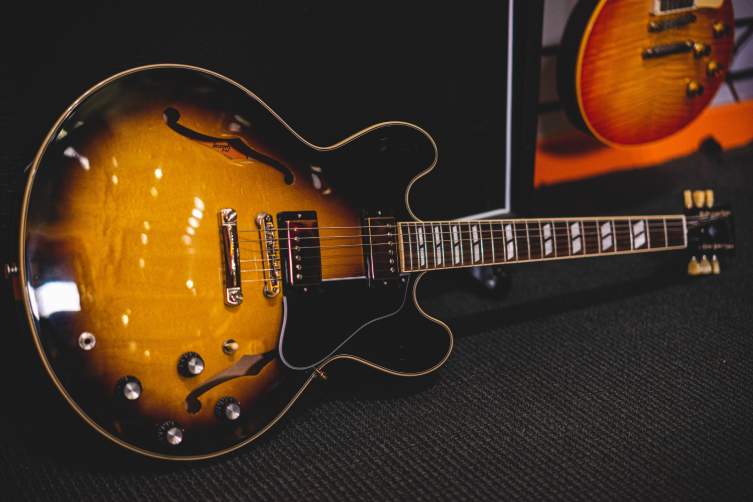
Gibson ES-355
On to the Gibson ES-355 and it must be one of the best looking Gibsons ever, right? This is basically the equivalent - in 335 terms - to what the Les Paul Custom is to the Les Paul Standard. Multiple-ply binding on the body and headstock, an ebony fingerboard with big block inlays and that split-diamond headstock inlay: it’s a recipe for handsomeness, for sure!
Interestingly, the ES-355 didn’t automatically come with the stereo outputs and the varitone: those could certainly be had, but they were optional (chargeable) extras.
This ES-355 as described there is very much the one you’ll find on sale today, as a Gibson Custom Shop instrument. They don’t make too many of these, so when we do see one in store, it’s like spotting some rare animal out in the wild!

The Gibson ES-336 & 339
Earlier on, I mentioned that most of the Gibson ES guitars were bigger in size than regular electric guitars. There are, however, a couple of modern models that defy this statement, so let’s have a look!
First off, the ES-336 and ES-339 look very similar at a superficial glance. Both of them are ‘shrunk down’ 335’s, made to be roughly the size of a Les Paul. Players have been asking for this for decades, so in the early Noughties, Gibson acquiesced.
The first guitar like this from Gibson was actually a limited edition signature model for Lost Boys actor Kiefer Sutherland! It was obviously a popular idea, so not long after, the ES-336 arrived. This is actually the rarer of the two guitars, because the 336 is made from a heavily carved out solid piece of wood! Yes, it’s not a ply body with a centre block, and as a result, the 336 is always an expensive proposition when encountered.
The ES-339, on the other hand, is created in the same manner as its full-sized sister model, the 335: maple and poplar plies over a solid maple centre block and a glued in mahogany neck. For people who want that semi style and tone, but can’t get on with the size, this is the guitar for you!

A Gibson For All Genres
So, those are the main Gibson semi-hollow guitars that are available today. I’ll sign off by highlighting the overall versatility of these instruments, because I think they might get a little overlooked in certain guitar circles. Jazz and blues fans have long since used the Gibson ES models, and Indie fans have been involved since Oasis conquered the world with their Epiphone replicas, but don’t forget that bands like Queens of the Stone Age routinely use ES models on tour. Eric Johnson is a huge fan of the ES-335, and even harder rockers like the late, great Geordie Walker from Killing Joke preferred to use Gibson ES exclusively.
From tasteful to apocalyptic, you can do it all with a Gibson semi-hollow!






